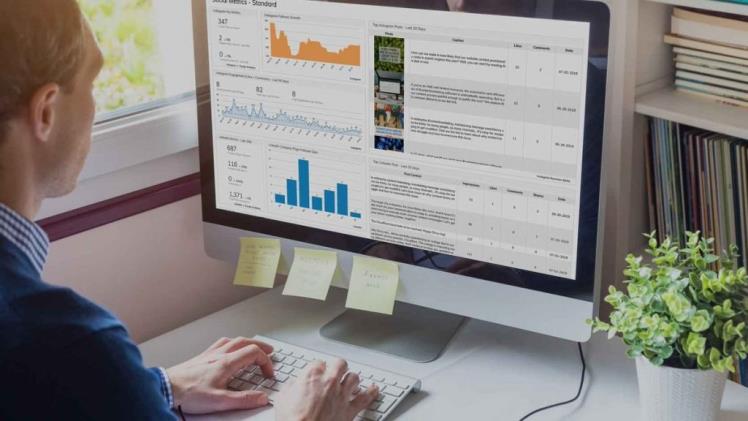Introduction
In today’s fast-paced, technology-driven work environment, managing employees effectively is more crucial than ever. Enter employee monitoring software—a tool that has evolved to meet the needs of modern businesses. But what exactly is employee monitoring software, and why has it become so essential? This comprehensive guide will dive deep into everything you need to know about employee monitoring software, including its benefits, key features, and the best practices for implementation.
Understanding Employee Monitoring Software
What is Employee Monitoring Software?
Employee monitoring software refers to tools and technologies used by organizations to keep track of employee activities, performance, and productivity within the workplace. This software helps employers monitor various aspects such as time management, project progress, data security, and even communication channels like emails and instant messaging.
Evolution of Employee Monitoring Tools
The concept of monitoring employees isn’t new. Historically, supervisors kept an eye on their staff through direct observation. However, with the rise of digital workspaces, the methods have significantly evolved. Today’s software can track everything from keystrokes to project milestones, providing a more detailed view of employee behavior.
Types of Employee Monitoring Software
Activity Tracking
Activity tracking software focuses on monitoring employees’ actions during work hours, such as the applications they use, the websites they visit, and the documents they interact with.
Project Tracking Software
Project tracking software is designed to help managers oversee the progress of various projects by monitoring task completion, deadlines, and overall team productivity.
Data Loss Prevention Software
Data loss prevention software aims to protect sensitive information by monitoring and controlling data transfer activities within a company. It’s particularly useful for preventing data breaches and ensuring compliance with data protection regulations.
Key Features of Employee Monitoring Software
Time Tracking and Attendance Monitoring
One of the most basic yet vital features of employee monitoring software is time tracking. This includes logging when employees clock in and out, as well as monitoring breaks and overtime.
Keystroke Logging
Keystroke logging, or keylogging, records every keystroke made by an employee. While controversial, this feature can help identify patterns in employee behavior, such as unauthorized access attempts or excessive non-work-related typing.
Screen Capture and Video Recording
Some advanced monitoring tools allow for periodic screen captures or even continuous video recording of employee screens. This feature provides a visual record of what employees are doing during work hours.
Email and Chat Monitoring
Monitoring communication channels is crucial for both productivity and security. These features track emails and chat messages for inappropriate content, potential data leaks, or even signs of insider threats.
Internet Usage Tracking
Internet usage tracking helps employers understand how employees spend their time online during work hours. This can include tracking visited websites, time spent on each site, and blocking access to non-work-related content.
Benefits of Employee Monitoring Software
Increased Productivity
By keeping track of employee activities, monitoring software helps identify inefficiencies and areas for improvement. Employees tend to stay more focused and productive when they know their activities are being monitored.
Enhanced Data Security
With data loss prevention features, monitoring software plays a critical role in safeguarding sensitive information. It helps prevent unauthorized data access, sharing, and leaks, thus protecting the company from potential breaches.
Improved Compliance
Many industries are governed by strict regulations regarding data handling and employee conduct. Employee monitoring software helps ensure that all activities are compliant with these regulations, reducing the risk of legal penalties.
Efficient Project Management
Project tracking software, as a subset of employee monitoring tools, enhances project management by providing real-time insights into task progress, team collaboration, and resource allocation.
Cost Reduction
Monitoring software can lead to significant cost savings by improving productivity, reducing wasted time, and minimizing the risk of costly data breaches or regulatory fines.
Implementing Employee Monitoring Software
Steps to Choose the Right Software
Identify Business Needs
Before selecting any software, it’s essential to understand your company’s specific needs. Are you focused on improving productivity, enhancing security, or both?
Evaluate Features and Usability
Not all monitoring software is created equal. Evaluate the features offered by different tools and consider their ease of use for both administrators and employees.
Consider Legal and Ethical Factors
Employee monitoring is a sensitive issue. It’s crucial to understand the legal implications in your region and ensure that the software complies with all relevant laws. Ethical considerations, such as employee privacy, should also be taken into account.
Best Practices for Implementation
Transparent Communication
Open communication is key to a successful implementation. Clearly inform employees about the monitoring tools being used, what they will monitor, and why they are being implemented.
Employee Training
Training sessions can help employees understand how the software works and how it benefits the organization. It can also alleviate any concerns they might have.
Regular Review and Updates
The digital landscape is constantly evolving, and so should your monitoring practices. Regularly review the software’s effectiveness and make updates as necessary to keep up with new challenges and opportunities.
Addressing Concerns and Misconceptions
Privacy Issues
One of the biggest concerns surrounding employee monitoring is privacy. Employers must strike a balance between monitoring productivity and respecting employee privacy rights.
Trust and Morale Impact
There’s a fine line between monitoring and micromanaging. If not implemented carefully, monitoring software can erode trust and negatively impact employee morale. It’s essential to use these tools in a way that fosters transparency and trust.
Legal Considerations
Laws regarding employee monitoring vary by region. Companies must ensure that their monitoring practices comply with local regulations to avoid legal repercussions.
Conclusion
Employee monitoring software is a powerful tool that, when used correctly, can significantly enhance productivity, security, and compliance within an organization. However, it’s important to implement these tools ethically and transparently, ensuring that employee privacy and trust are maintained. With the right approach, employee monitoring software can help businesses thrive in today’s competitive landscape.






